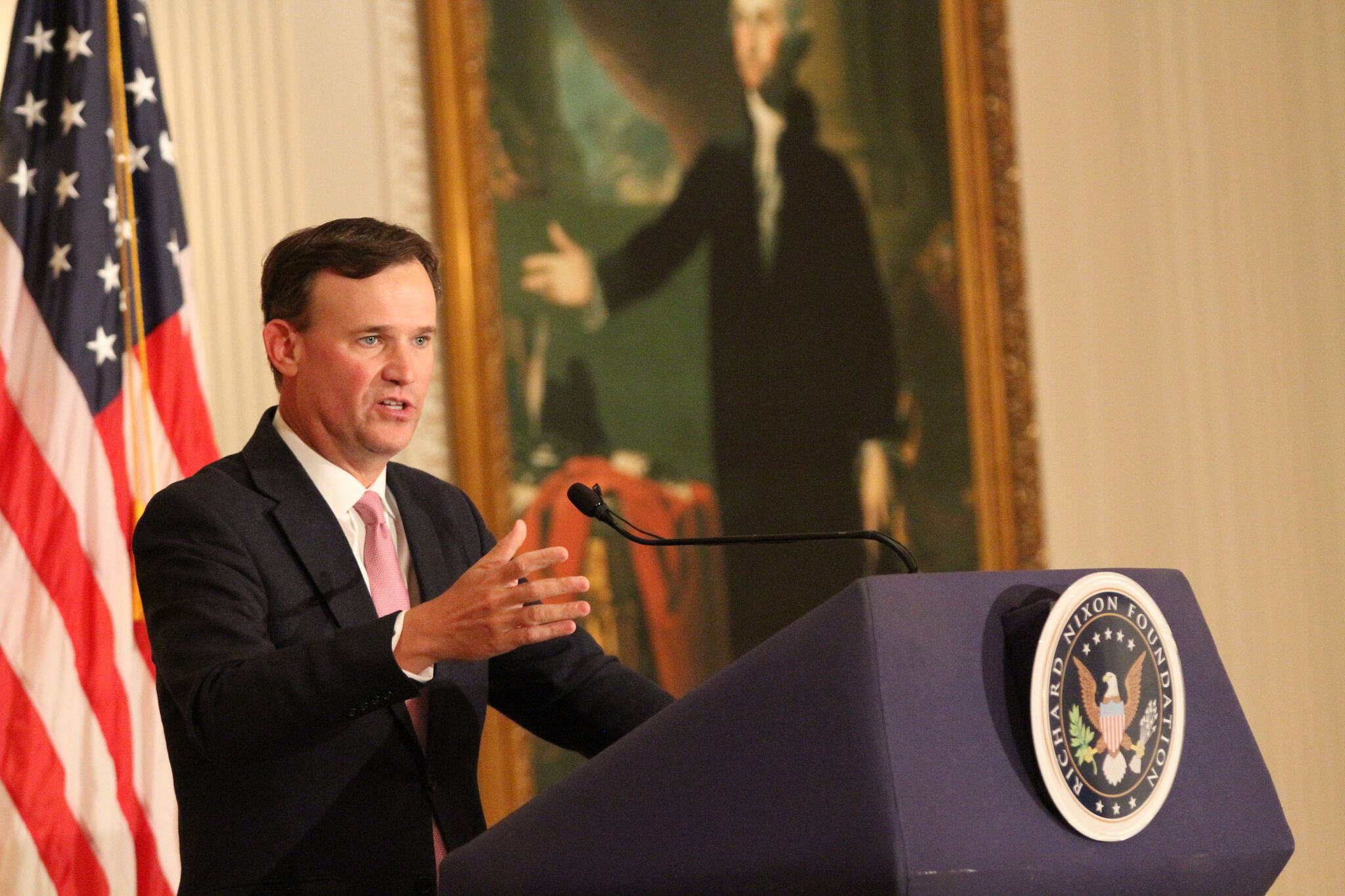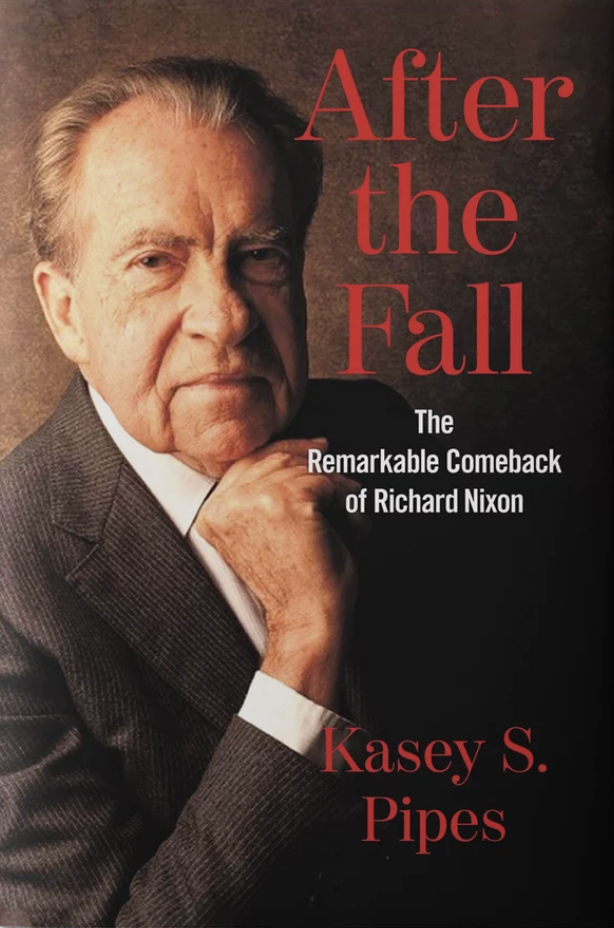Historian and presidential speechwriter Kasey Pipes gives a talk in the Nixon Library’s East Room on July 29, 2019 about his book, “After the Fall: The Remarkable Comeback of Richard Nixon.”
July 30, 2019
In the last 20 years of his life, President Nixon not only changed himself, but changed history, argued historian and presidential speech writer Kasey Pipes during a talk at the Nixon Library.
Pipes is author of a new book about RN’s post-presidential years, After the Fall: The Remarkable Comeback of Richard Nixon released this month.
Pipes said that writing the book was the road less traveled. There have been scores of books written about the Nixon presidency, but no single comprehensive volume on the post-presidency. With exclusive access to Nixon’s private papers, Pipes’ work makes the case that while historians will debate the success of Nixon’s White House years, there is no debate on the success of his years afterward.
When Richard Nixon became the first and only president to resign from office in 1974, he traveled back to California dejected and with no clear path for making a living.
In October, Nixon’s bout with phlebitis — inflammation in his veins — almost claimed his life.
Nixon gradually returned to the public eye.
His first public appearance in Washington since Watergate took place in January 1978 at the funeral of Senator Hubert Humphrey.
Before he succumbed to his battle with cancer, Senator Humphrey called Nixon on Christmas Eve 1977 to tell him that he wanted his one-time rival to attend his memorial service.
Nixon agreed.
When Humphrey hung up the phone, he told his wife that “No former president should live in exile from the nation’s capital.”
Pipes cites a December 1974 diary entry, in which Nixon began to turn the tide and draw his road map for the next 20 years.
“A book – maybe one, maybe more – and to follow it with speeches, television where possible, which will maybe put some things in perspective,” Nixon wrote.
For Pipes, these words effectively invented the template for the modern post-presidency, arguing that Nixon’s predecessors — Truman, Eisenhower, and Johnson — were much less active and were more inclined to enjoy retirement.
Pipes explained this was much less for Nixon. He remained active through the power of his ideas, and had a desire to resurrect himself and continue a life of service and influence. Nixon wrote books that mattered (he wrote 10 total), and provided invaluable counsel to his presidential successors.
Nixon’s 1980 book about America’s global leadership, The Real War, was carried by Ronald Reagan throughout the campaign trail and confirmed his views of the Soviet Union.
In the early Reagan administration, Nixon sent a memo to deputy chief of staff Michael Deaver, suggesting that President Reagan broadcast a weekly radio address to set the tone for the next week’s news cycle.
Reagan followed the advice, starting the Saturday radio address, a tradition continued with all succeeding presidents until Donald Trump.
Nixon’s advice proved crucial to Reagan’s negotiations with Soviet Premier Mikhail Gorbachev. He urged that Reagan offer to share technology from the Strategic Defensive Initiative (SDI) as a way to neutralize his Soviet counterpart in negotiations. This tactic succeeded, and became an element of the 1987 Intermediate-Range Nuclear Forces (INF) Treaty.
After the Tiananmen Square massacre of June 1989, Nixon traveled to Beijing in October to meet with China’s leadership. Nixon was admired by the Chinese people for the historic opening in 1972, and used his audience to influence Premier Deng Xiaoping.
Another tragedy on this scale he warned Deng, “would be the death of a relationship and of policies that have served us so well.” On November 5, Nixon reported on his China meetings with President Bush and top aides at the White House.
“His meetings in both China and Washington calmed passions on both sides,” Pipes writes in the book.
President Clinton was the last Head of State to heed to Nixon’s counsel — calling their conversation about how to go about supporting democratic forces in Russia was one of the best meetings he’s ever had.
Pipes reflected on Nixon’s eulogy of legendary Ohio State football coach Woody Hayes in 1987, which he believes gives us the full measure of who Nixon was as a human being.
Nixon noted that Hayes could have retired on top after winning his third national title in 1969.
“He wanted to go on and do more,” Nixon said. “He new there were risks. After all, there’s a rule of life: If you take no risks, you will suffer no defeats. But if you take no risks, you will win no victories.”
“Nixon was describing Woody Hayes,” Pipes concluded. “But he was also describing himself.”


